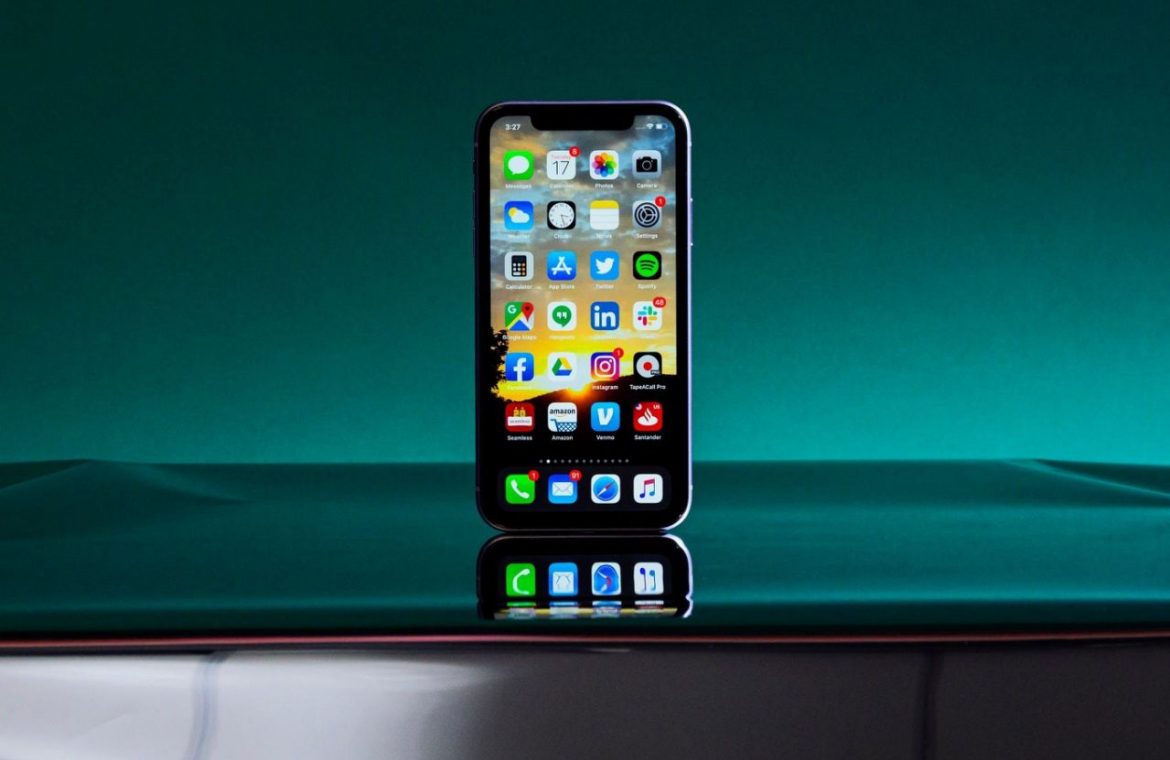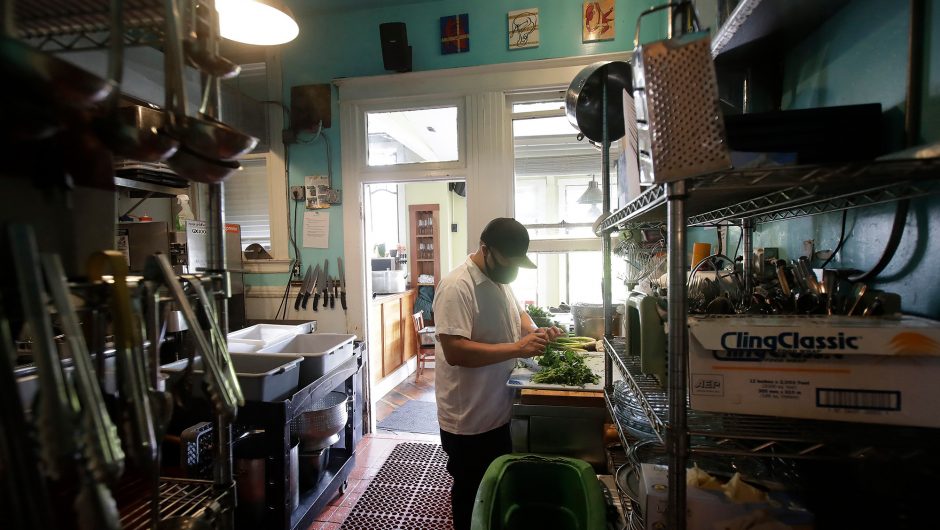You can enable the COVID-19 exposure notification API on your iPhone if it’s updated to iOS 13.5.
Hollis Johnson/Business Insider
Apple’s latest iPhone software update includes a feature that could notify you of possible exposure to COVID-19.
You can only use the feature and access notifications for it once you’ve downloaded an authorized public health app that supports the software’s contact-tracing technology.
Compatible health apps are not yet available, though many public health agencies have access to start creating them.
The iOS 13.5 update also includes an update for Face ID to accommodate wearing face masks, along with other small fixes related to COVID-19.
Visit Business Insider’s Tech Reference library for more stories.
Apple’s latest iPhone software update, iOS 13.5, includes an anticipated tech partnership between Apple and Google: COVID-19 exposure notification.
The feature uses Bluetooth and contact-tracing technology from authorized public health apps to alert users of a possible exposure to the virus. You’ll receive a notification when you’ve come in contact with someone who has tested positive and has reported test results to a compatible health app. (Earlier this month, the companies released a preview of how the technology works to provide both accurate information and protect anonymity.)
Now that the software is available for installation, public health agencies can start incorporating the application programming interface (API) into their apps; 22 countries and three US states currently have access to begin doing so.
To enable the contact-tracing feature on your iPhone, you’ll need to first update your device to iOS 13.5 as you normally would update it, through the “General” section of your Settings app. Once your iPhone installs the new software and restarts, you’ll find the new COVID-19 notification feature at the top of the “Health” page in the “Privacy” section of your Settings app.
It’s important to note, however, that until you are able to install a compatible public health app, the feature will remain off and you will not be able to receive notifications.
Story continues
While the biggest new feature is by far these COVID-19 notifications, users may also find the update’s other COVID-19-influenced features helpful, such as the simplified unlock process for Face ID devices to accommodate wearing face masks.
Here’s how to update your device and enable the COVID-19 exposure notifications.
How to update your iPhone to iOS 13.5
If you have Automatic Updates turned on, your phone may have already updated to iOS 13.5. To check which software version you are currently using or to manually install the latest one, you’ll need to access the “General” tab of your Settings app.
1. Open the Settings app on your iPhone.
2. Locate the “General” tab and tap to open.
Find the “General” tab in your iPhone Settings.
Marissa Perino/Business Insider
3. Tap “Software Update” at the top of the screen.
If you tap “About” you’ll see what software version you’re already using. If your software is up to date, this will read “iOS 13.5.” Additionally, if you tap “Software Update” it will read “Your software is up to date.”
Tap the “About” or “Software Update” tabs at the top to check your software.
Marissa Perino/Business Insider
4. In the “Software Update” tab, tap the blue “Download and Install” button to get started.
Begin downloading iOS 13.5.
Marissa Perino/Business Insider
5. As your iPhone begins the software download, it will estimate the minutes remaining at the top. While you wait, you can tap “Learn More” to read more about what the update offers.
6. The “Learn more” tab will detail the new Face ID, Exposure Notification, FaceTime, and Emergency Services features. Tap “Back” to return to the screen and check on your time remaining. You are also free to use other apps on your phone at this time.
Read about the new update while you wait.
Marissa Perino/Business Insider
7. Once the software download is complete, a “Downloaded” label will replace the countdown at the top. A blue “Install Now” button will also appear. Tap this button to install the software. This will immediately prompt a small pop-up that says “Verifying update…”
Tap to install the new software.
Marissa Perino/Business Insider
8. Once your iPhone verifies the update, it will automatically restart. The Apple logo will display and the bar below it will load as the update installs. This may take a few minutes. When it finishes installing, your iPhone will automatically turn back on and you can log in with Face ID, Touch ID, or a passcode. If the update was successful, you should receive a push notification on your lock screen as well.
How to activate COVID-19 exposure notifications on your iPhone
1. Open Settings on your iPhone after updating to iOS 13.5.
2. Scroll down and locate the “Privacy” tab.
Tap the “Privacy” tab.
Marissa Perino/Business Insider
3. Tap “Health.”
Tap the “Health” tab next to the heart app icon.
Marissa Perino/Business Insider
4. Since you’ve updated, you’ll find a new tab at the top labeled “COVID-19 Exposure Logging.” Tap to view the new settings options.
Find and tap the new tab at the top of the “Health” page.
Marissa Perino/Business Insider
5. On the COVID-19 page, you’ll see a switch at the top to turn on “Exposure Logging.” If you have a compatible public health app installed, you’ll be able to tap or switch the toggle from gray to green. If you have any active apps, you’ll see them in the list below.
6. You can tap “Learn more…” to read more about the “Exposure Notifications & Privacy.” If you do, tap “Done” in the upper right hand corner to return to the main page.
The “COVID-19 Exposure Logging” details page.
Marissa Perino/Business Insider
7. This main page will also give you the option to delete your exposure log once you’re able to use the tracking feature. The “Exposure Checks” tab will keep a record of all requests in the past 14 days. Tap to open the tab — which will immediately prompt a “Face ID” recognition — to view that page. Tap “Back” to return to the main page.
Read the original article on Business Insider








